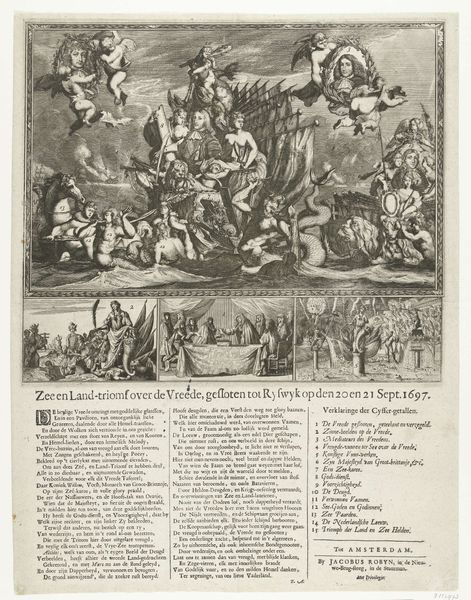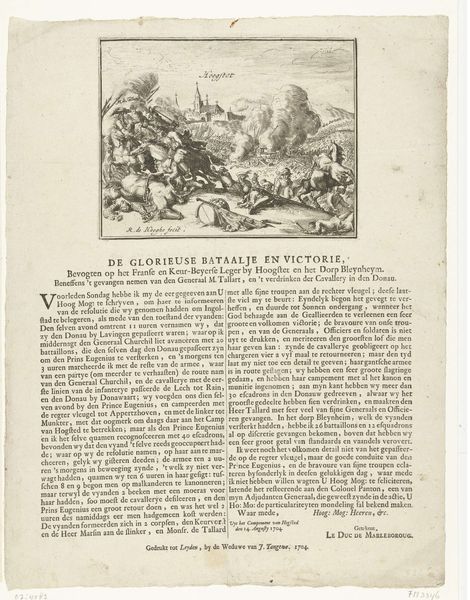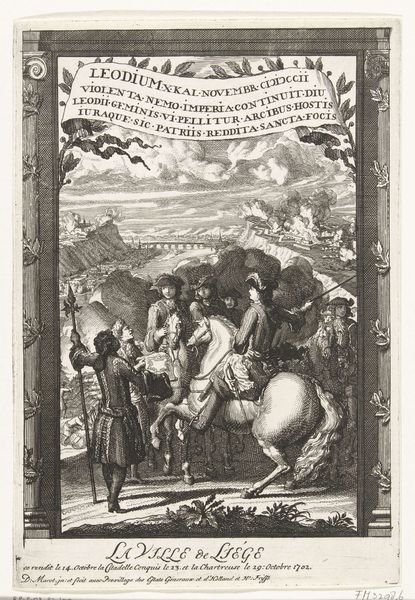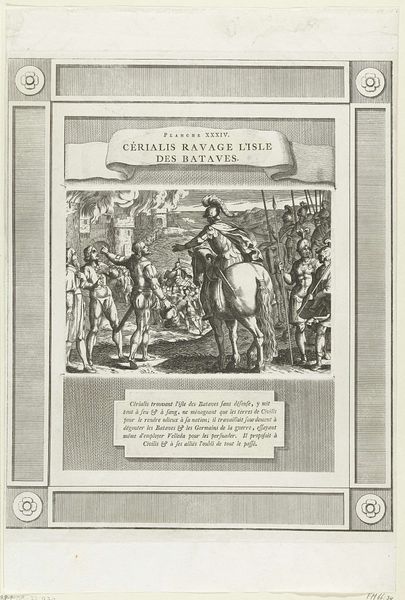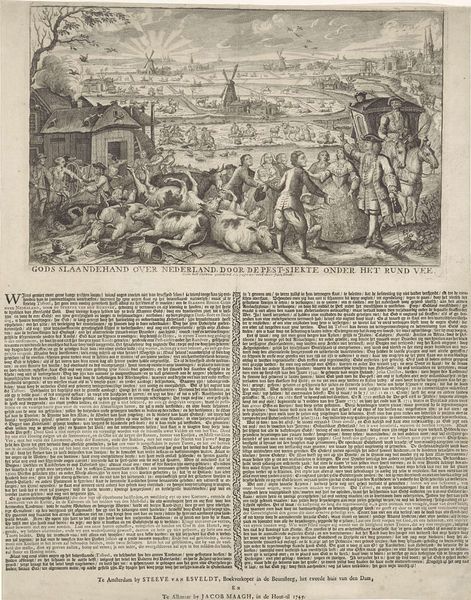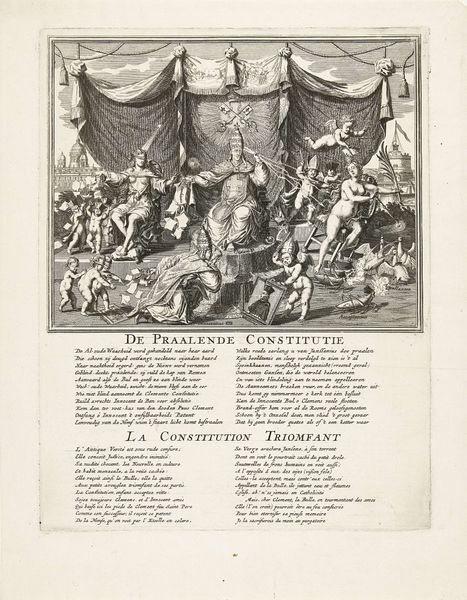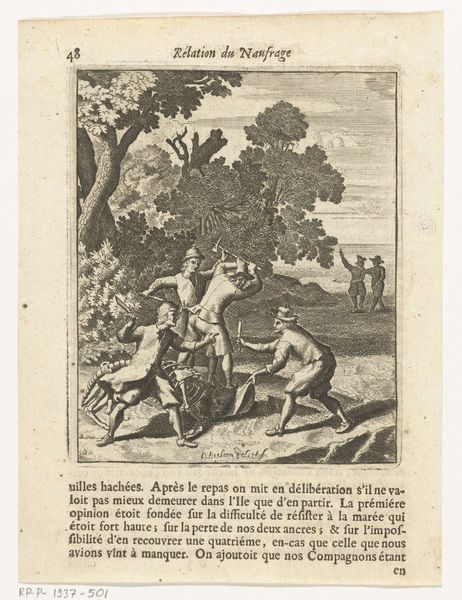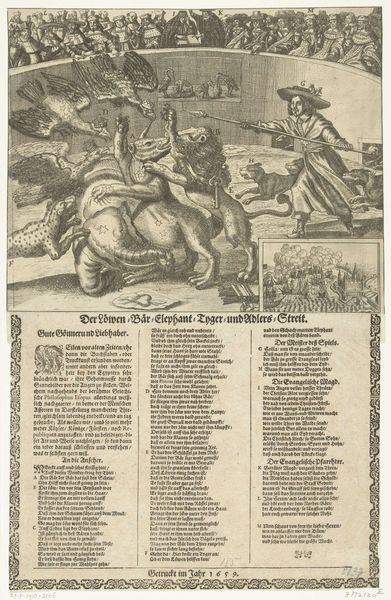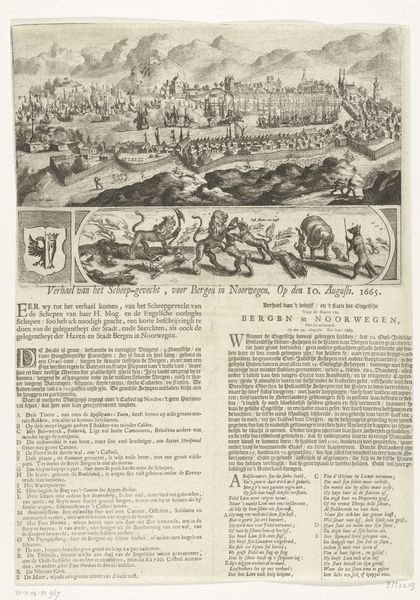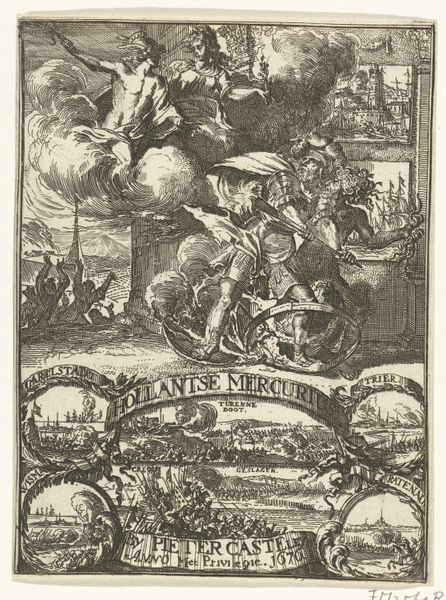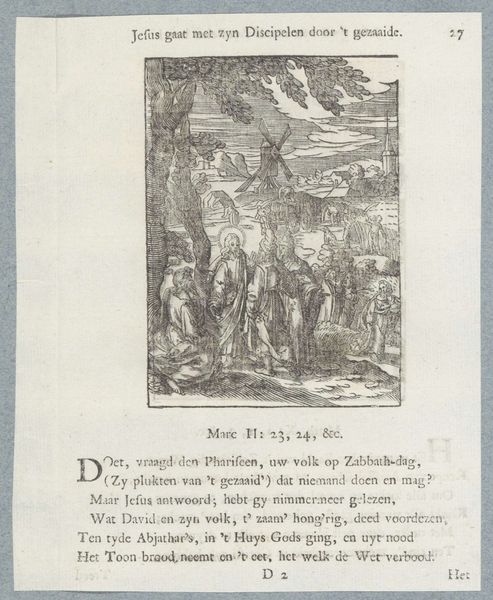
Waarschuwing over Gods straf in de vorm van de pest die woedt in Amsterdam, 1654 1655
0:00
0:00
anonymous
Rijksmuseum
graphic-art, print, engraving
#
graphic-art
#
baroque
# print
#
history-painting
#
engraving
Dimensions: height 296 mm, width 184 mm
Copyright: Rijks Museum: Open Domain
Curator: This is an engraving from 1655 titled "Warning about God's punishment in the form of the plague raging in Amsterdam, 1654". Editor: It strikes me as rather… stark. There's a distinct lack of warmth, perhaps understandably, given its subject matter. The figures are stiff, the angel imposing… it definitely conveys a sense of dread. Curator: Indeed. Created by an anonymous artist, this piece falls into a period of immense upheaval in Amsterdam's history, offering insight into how societal anxieties were portrayed and processed through art. It highlights not only the devastating effects of the plague but also prevailing religious interpretations of such crises. Editor: It’s intriguing how the imagery blends Old Testament narratives, featuring King David, with a very immediate, local disaster. It reflects a desire to find meaning, or perhaps just a framework, for incomprehensible suffering. Is it about collective guilt, perhaps? The plague as divine retribution? Curator: Precisely. The artwork operates on several levels. Firstly, it presents the biblical story of King David choosing punishment for his people. Secondly, it explicitly connects this narrative to the ongoing plague in Amsterdam, with a clear message. And thirdly, consider the figures lying lifeless: who they are, what stories might they tell about how communities were disproportionately affected. Editor: Absolutely, seeing who is included—and omitted—matters greatly. This image seems crafted to inspire a very specific kind of communal soul-searching and submission. Note also the meticulous list of the dead within Amsterdam, included here with exact figures, which gives an empirical underpinning to this narrative of spiritual transgression. Curator: And it speaks volumes about how authority – both divine and earthly – sought to manage social behavior during times of crisis, utilizing visual media to enforce compliance and discourage dissent. Editor: This engraving is really doing double duty here. It's not just a historical record; it's an active participant in shaping public sentiment. It reveals to us the dynamics between art, power, and the desperate search for meaning amid tragedy. Curator: Absolutely. The combination of historical allegory, contemporary data, and explicit moralizing creates a powerful and unsettling statement. Editor: Indeed, a potent mix of fear and faith, meticulously etched onto a single sheet. It reminds us how profoundly historical traumas continue to shape our present understanding of identity, justice and history itself.
Comments
No comments
Be the first to comment and join the conversation on the ultimate creative platform.
